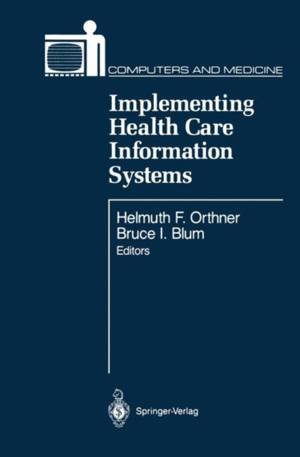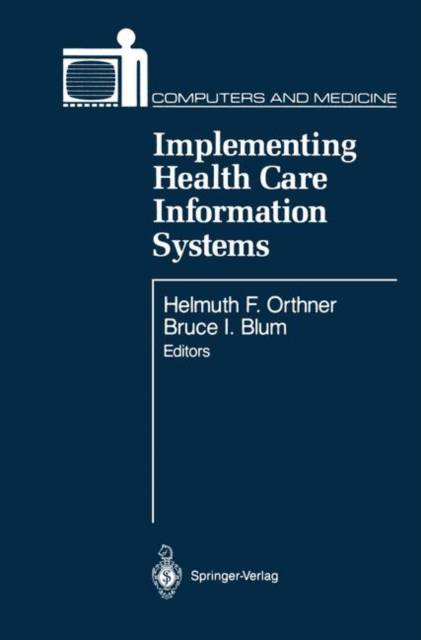
Door een staking bij bpost kan je online bestelling op dit moment iets langer onderweg zijn dan voorzien. Dringend iets nodig? Onze winkels ontvangen jou met open armen!
- Afhalen na 1 uur in een winkel met voorraad
- Gratis thuislevering in België vanaf € 30
- Ruim aanbod met 7 miljoen producten
Door een staking bij bpost kan je online bestelling op dit moment iets langer onderweg zijn dan voorzien. Dringend iets nodig? Onze winkels ontvangen jou met open armen!
- Afhalen na 1 uur in een winkel met voorraad
- Gratis thuislevering in België vanaf € 30
- Ruim aanbod met 7 miljoen producten
Zoeken
Implementing Health Care Information Systems
€ 147,45
+ 294 punten
Omschrijving
This series in Computers and Medicine had its origins when I met Jerry Stone of Springer-Verlag at a SCAMC meeting in 1982. We determined that there was a need for good collections of papers that would help disseminate the results of research and application in this field. I had already decided to do what is now Information Systems for Patient Care, and Jerry contributed the idea of making it part of a series. In 1984 the first book was published, and-thanks to Jerry's efforts - Computers and Medicine was underway. Since that time, there have been many changes. Sadly, Jerry died at a very early age and cannot share in the success of the series that he helped found. On the bright side, however, many of the early goals of the series have been met. As the result of equipment improvements and the consequent lowering of costs, com- puters are being used in a growing number of medical applications, and the health care community is very computer literate. Thus, the focus of concern has turned from learning about the technology to understanding how that technology can be exploited in a medical environment.
Specificaties
Betrokkenen
- Uitgeverij:
Inhoud
- Aantal bladzijden:
- 438
- Taal:
- Engels
- Reeks:
Eigenschappen
- Productcode (EAN):
- 9781461281221
- Verschijningsdatum:
- 27/09/2011
- Uitvoering:
- Paperback
- Formaat:
- Trade paperback (VS)
- Afmetingen:
- 156 mm x 234 mm
- Gewicht:
- 644 g

Alleen bij Standaard Boekhandel
+ 294 punten op je klantenkaart van Standaard Boekhandel
Beoordelingen
We publiceren alleen reviews die voldoen aan de voorwaarden voor reviews. Bekijk onze voorwaarden voor reviews.










